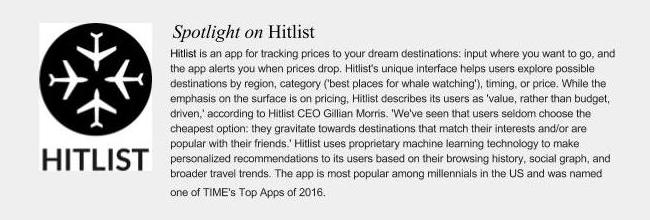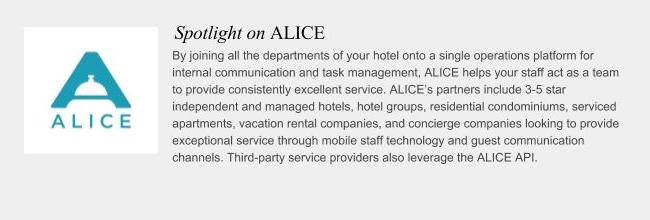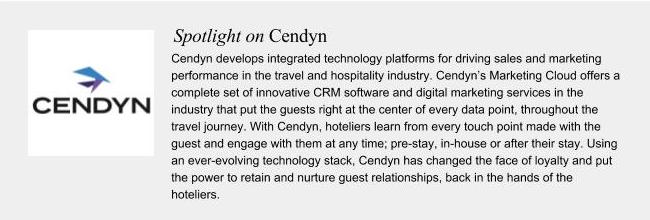
Marketing to your guests isn’t just about winning them over at planning and at booking. There’s actually seven steps to the customer journey, and technology can help you optimize your marketing, every step of the way.
When marketing your hotel to your guests, it’s tempting to think there are only two phases of the guest journey that matter: planning and booking. As a result, many hotels optimize their technology for just these two stages.
The reality, of course, is that the guest experience doesn’t end at booking. It’s actually cyclical – cycling from planning through booking through the guest’s stay to planning again. While the exact number of phases in the guest journey is up for debate (Google says five, we say seven), what’s important is there are multiple stages of the guest journey that together create the guest experience. In each of these stages, the hotel has the opportunity to use technology to optimize the guest experience for more bookings, more loyalty, and more revenue.
The Seven Stages of the Guest Lifecycle
Dream Technologies: Search engines (Google), social media networks (Facebook, Instagram), online media (Conde Nast Traveler), discovery apps (Hitlist).
Every hotel stay begins with someone dreaming of going to a particular place or having a particular kind of experience.
In this phase, the guest hasn’t yet honed in on your hotel. They have an idea or a dream: a Hawaiian escape, New York City with friends, or a conference for work (maybe not a dream, but a requirement!). They have a certain experience in mind, but are still exploring the opportunities and finer details. The hotel’s role in this phase is to be as relevant and discoverable as possible. Hotels will want to optimize their search engine presence, be visible in the media and on social media, and make sure they’re on the radar of travel discovery apps, like Hitlist or Hotel Tonight.
Select Technologies: Your website, OTAs (Expedia), your affiliations (Leading Hotels of the World, Skylark), review sites (TripAdvisor).
The average traveler visits over 20 different travel websites before making a booking decision! Your hotel’s challenge in this stage is to cut through the noise and stand out from the competition.
In this phase, the guest needs a reason to book with you instead of with your competition. Selecting your hotel over others will come down to a variety of factors. Given TripAdvisor’s influence online, a decisive factor will be your hotel’s reputation (TripAdvisor appears on the first page of organic search for 99% of unbranded search terms, and 93% of travelers say they’re influenced by online reviews). (In this regard, your hotel’s reputation is in many ways is a reflection of the level of service at your hotel (something we’ll get to later…)).
Also important in influencing the selection of your hotel is your website (how optimized for search is it? How compelling is its imagery? Is it optimized for mobile?), your presence on the OTAs (are you discoverable?), your membership with affiliate brands (like Skylark) and whether or not offline affiliations (like membership with Leading Hotels of the World) aid in online discovery.
Book Technologies: Your website and its booking engine (TravelClick, Avvio), direct booking technologies (Triptease, SiteMinder)
At this phase, the guest needs a reason to book on your website instead of anywhere else. A booking engine optimized for your website (like Avvio) and an effective loyalty program help here. So too do innovative technologies like Triptease’s Direct Booking Platform and SiteMinder, which work with hotels to improve their direct booking conversions. Of course, an optimized website (facilitated by companies like TravelClick) is a must as well.
Prepare Technologies: Pre-arrival guest messaging (ALICE, Checkmate), upsell platforms (Nor1), trip-planning/concierge services (Porter & Sail).
The time of booking is when your guest is perhaps most excited about your hotel and their upcoming trip. Hotels will want to capitalize on this phase by engaging with their prospective guests. Use this phase to learn the reason for the guests’ trips and help them plan their stays.
If hotels have an in-house concierge, they can use messaging tools like ALICE to help their guests plan activities prior to arrival. Hotels can also outsource their concierge to services like Porter & Sail, which will work with your guests to plan activities as soon as they’ve booked their stay. Hotels can also use this time to upsell guests on rooms, amenities, and activities, with tools like Nor1.
Developing a relationship with guests in this phase will help you provide them a better in-stay experience and increase the chance they’ll share their experience and return.
Stay Technologies: Guest messaging (ALICE), service optimization technologies (ALICE).
Many hotels don’t think of the stay phase of the guest journey as a “marketing” phase, but they should. In fact, as we often say here at ALICE, the customer experience is your best marketing, strongly influencing the same guest’s propensity to share their experiences and return (and inspire others in the dream and selection phases of their journeys as well).
Much of the guest experience comes down to the quality of service your hotel provides and, increasingly, the degree of convenience you offer your guests. ALICE improves your guest service by helping your staff get on the same (digital) page. ALICE’s request management platform connects your staff departments for seamless communication and streamlined task management. And ALICE’s dedicated concierge technology gives concierges the tools they need to excel at their jobs and exceed guest expectations.
Meanwhile, ALICE’s guest platform, which includes mobile apps, an open API to plug into your existing mobile app, and messaging (SMS), puts all your hotel’s services and amenities at your guests’ fingertips, for the ultimate in convenience and guest satisfaction.
Share Technologies: Review collection technologies (Medallia), social sharing and advocacy platforms (Flip.to), online review sites (TripAdvisor).
It’s a natural impulse to want to share good experiences with others. Three quarters of U.S. travelers share their trip experiences on social networks, while 97% of Millennials say they share pictures while traveling (on channels like Facebook, Instagram, and Snapchat).
Hotels should encourage guests to share their experiences. For one thing, the collective reach of your guests is enormous and incredibly targeted. Your guests can introduce you to travelers just like them—the perfect demographic for your hotel—before competitors have even had the chance to win the relationship.
Plus, according to Cognizant, word of mouth is the single most important factor in selecting a hotel. And 84% of people say they trust reviews from friends and family over any other type of advertising.
Encourage promotion of your hotel through your guests with tools like Flip.to, the marketing platform that lets guests become advocates and introduce your brand worldwide.
The platform earns and tracks new bookings while growing brand awareness, web traffic, warm leads and a library of authentic content highlighting the travel experiences your guests are sharing with your hotel at the center.
You can use this user-generated content on your website, and share guest content via your own social channels, which will help influence other guests early on in their own customer journeys.
TripAdvisor is also an important channel for the share phase of the guest journey because of its outsize influence on the early phases of other guests (80% of travelers read 6 to 12 reviews on average before booking a hotel). While encouraging guests to share their experiences to TripAdvisor is important, but so too is responding to these reviews. Indeed, 85% of users say a thoughtful management response to a bad review improves their overall impression of a property.
Lastly, inspiring guest sharing isn’t just about generating contributions to public forums like review sites and social media. Encouraging guest feedback via internal channels is also an important part of hotel marketing during the share phase of the guest journey. This is because it can allow you to preempt issues before they make their way to public forums, and also because soliciting customer feedback can lead you to make improvements to the guest experience that will increase the likelihood of his or her return. Services like Medallia help hotels collect this guest feedback across a variety of channels.
Return Technologies: Email marketing, remarketing campaigns, social media (TravelClick CRM, Cendyn)
It’s no secret a returning guest is “cheaper” than a new guest. But a returning guest means so much more than money saved in marketing – it’s the surest sign you’ve provided an exceptional guest experience. And it’s also a virtuous circle. Every time a guest returns to your property you have the opportunity to “know” the guest a bit more, allowing you to increase your personalization and improve the guest experience with every stay.
While the experience on property is the best marketing to influence a guest’s return, tools like email marketing, remarketing and social media (your hotel’s and other guests’), as well as a compelling loyalty program can also help remind the guest of the fantastic time he or she had on property and ensure their return. Investing in a CRM, like Cendyn’s, is the surest way to have the data and functionality to run these email, remarketing, and social campaigns.
As you can see, marketing to the guest is much more than guiding them from planning to booking. In fact, marketing has a role in all seven phases of the guest journey: from dream, through stay, and all the way until return (and return again).
Most importantly, marketing to your guest doesn’t just concern his or her online interaction with your hotel. It also concerns the guest’s actual in-person experience on property. By reconceiving marketing’s role to extend to all seven phases, hotels have a tremendous opportunity to craft a lasting and impactful relationship with the guest – a relationship that can be nurtured and strengthened by the right technology.








